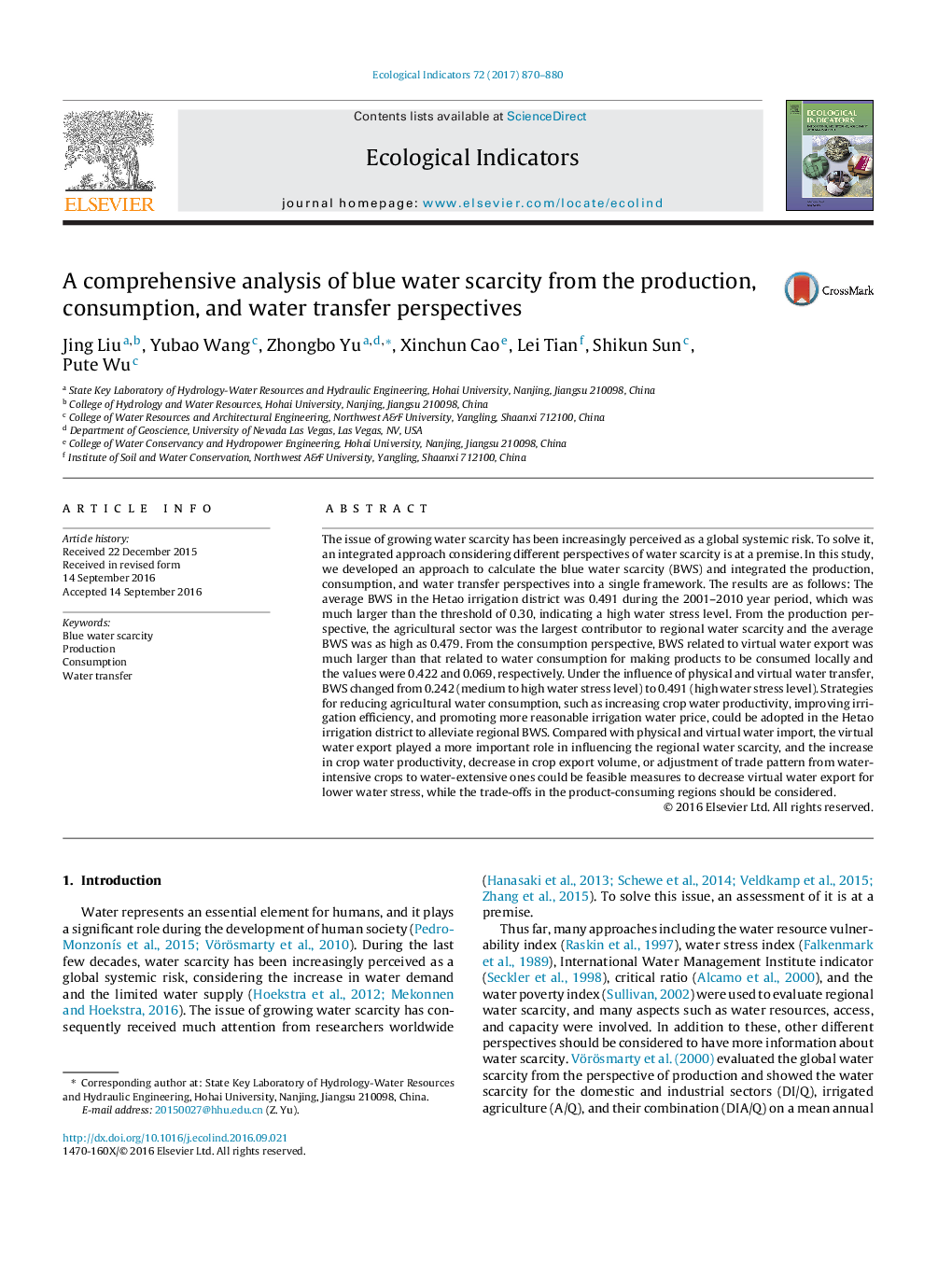| کد مقاله | کد نشریه | سال انتشار | مقاله انگلیسی | نسخه تمام متن |
|---|---|---|---|---|
| 6292883 | 1617130 | 2017 | 11 صفحه PDF | دانلود رایگان |
عنوان انگلیسی مقاله ISI
A comprehensive analysis of blue water scarcity from the production, consumption, and water transfer perspectives
ترجمه فارسی عنوان
تجزیه و تحلیل جامع از کمبود آب آبی از دیدگاه های تولید، مصرف و انتقال آب
دانلود مقاله + سفارش ترجمه
دانلود مقاله ISI انگلیسی
رایگان برای ایرانیان
کلمات کلیدی
کمبود آب آبی، تولید، مصرف، انتقال آب،
موضوعات مرتبط
علوم زیستی و بیوفناوری
علوم کشاورزی و بیولوژیک
بوم شناسی، تکامل، رفتار و سامانه شناسی
چکیده انگلیسی
The issue of growing water scarcity has been increasingly perceived as a global systemic risk. To solve it, an integrated approach considering different perspectives of water scarcity is at a premise. In this study, we developed an approach to calculate the blue water scarcity (BWS) and integrated the production, consumption, and water transfer perspectives into a single framework. The results are as follows: The average BWS in the Hetao irrigation district was 0.491 during the 2001-2010 year period, which was much larger than the threshold of 0.30, indicating a high water stress level. From the production perspective, the agricultural sector was the largest contributor to regional water scarcity and the average BWS was as high as 0.479. From the consumption perspective, BWS related to virtual water export was much larger than that related to water consumption for making products to be consumed locally and the values were 0.422 and 0.069, respectively. Under the influence of physical and virtual water transfer, BWS changed from 0.242 (medium to high water stress level) to 0.491 (high water stress level). Strategies for reducing agricultural water consumption, such as increasing crop water productivity, improving irrigation efficiency, and promoting more reasonable irrigation water price, could be adopted in the Hetao irrigation district to alleviate regional BWS. Compared with physical and virtual water import, the virtual water export played a more important role in influencing the regional water scarcity, and the increase in crop water productivity, decrease in crop export volume, or adjustment of trade pattern from water-intensive crops to water-extensive ones could be feasible measures to decrease virtual water export for lower water stress, while the trade-offs in the product-consuming regions should be considered.
ناشر
Database: Elsevier - ScienceDirect (ساینس دایرکت)
Journal: Ecological Indicators - Volume 72, January 2017, Pages 870-880
Journal: Ecological Indicators - Volume 72, January 2017, Pages 870-880
نویسندگان
Jing Liu, Yubao Wang, Zhongbo Yu, Xinchun Cao, Lei Tian, Shikun Sun, Pute Wu,
